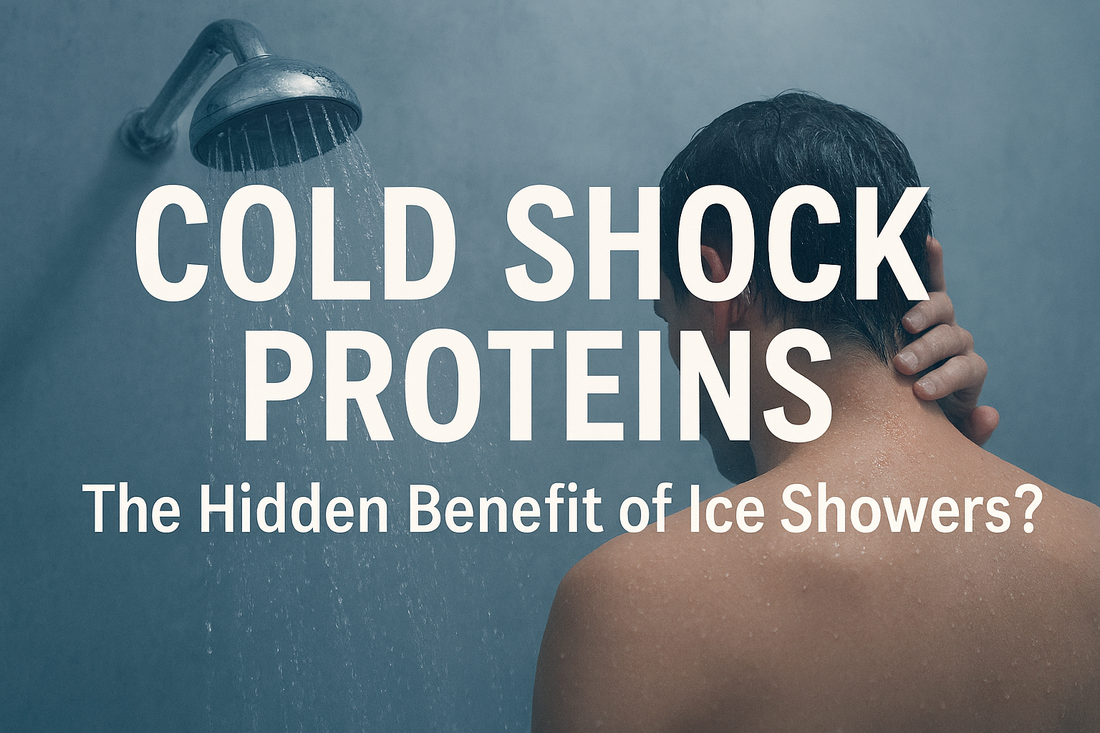
Cold Shock Proteins: The Hidden Benefit of Ice Showers?
❄️ Cold Shock Proteins: The Hidden Benefit of Ice Showers?
In the pursuit of vitality and resilience, few rituals are as deceptively simple—and surprisingly powerful—as the humble ice shower. Beyond the invigorating jolt and mental clarity, cold exposure triggers a fascinating biological response: the activation of cold shock proteins.
These specialized proteins are produced when our bodies encounter sudden drops in temperature. Think of them as cellular guardians—rushing in to stabilize fragile structures, repair damage, and prevent the clumping of misfolded proteins that can lead to disease. Recent studies suggest that cold shock proteins may play a pivotal role in slowing the aging process, enhancing cellular regeneration, and even boosting longevity.
When you step into cold water, your body initiates a cascade of protective mechanisms. Among them, cold shock proteins help maintain protein homeostasis, reduce inflammation, and support autophagy—the cellular “clean-up” process that recycles damaged components. Over time, regular cold exposure may strengthen your body’s ability to adapt, repair, and thrive under stress.
So whether you're plunging into an icy pool or simply turning the shower dial to cold, you're not just braving discomfort—you’re activating a hidden network of cellular allies working to keep you youthful, resilient, and strong.
🧬 What Are Cold Shock Proteins?
Cold shock proteins are a class of stress-response molecules produced when your body experiences a drop in temperature—typically below 37°C. Two key players:
- RBM3 (RNA-binding motif protein 3)
- CIRP (Cold-inducible RNA-binding protein)
These proteins:
- Stabilize RNA and prevent misfolding
- Support cellular repair and regeneration
- Reduce inflammation and oxidative stress
- May protect neurons and slow aging

⏱️ How Long Is Enough to Activate Them?
You don’t need to suffer to benefit. Studies and anecdotal evidence suggest:
- Intensive Cold Shock: 3–7°C for 30 seconds to 1 minute for experienced users.
- Moderate Activation: 8–11°C for 1 to 2 minutes. Good ballance between shock and safety.
- Mild Activation: 10–15°C. Great for begginers or post workout recovery.
Consistency matters more than intensity. Regular short exposures build adaptation and keep CSPs active.
⚠️ Risks of Overexposure
While CSPs are protective, too much cold can backfire:
- Hypothermia risk: Especially below 10°C for extended periods
- Stress overload: Chronic overexposure can spike cortisol
- Immune suppression: Excessive cold may dampen immune response
Signs you’ve gone too far:
- Shivering that doesn’t stop after drying off
- Fatigue or brain fog post-plunge
- Numbness or tingling in extremities
🌀 Legacy Twist: Rituals + Recovery
To make cold exposure a legacy ritual:
- Pair each plunge with an affirmation (e.g., “I awaken my cellular guardians”)
- Track your adaptation curve—note how your body responds over time
- Integrate warm recovery rituals (tea blends, breathwork, magnesium rubs)
Links: For more informaiton.
- https://www.nature.com/articles/srep02054
- https://www.frontiersin.org/journals/pharmacology/articles/10.3389/fphar.2021.610792/full
- https://www.embopress.org/doi/full/10.15252/emmm.202217157
Related Products
- https://toyesi.com/collections/by-the-pool
- https://toyesi.com/collections/gym-wellness-centres
- https://toyesi.com/products/ic-9000
